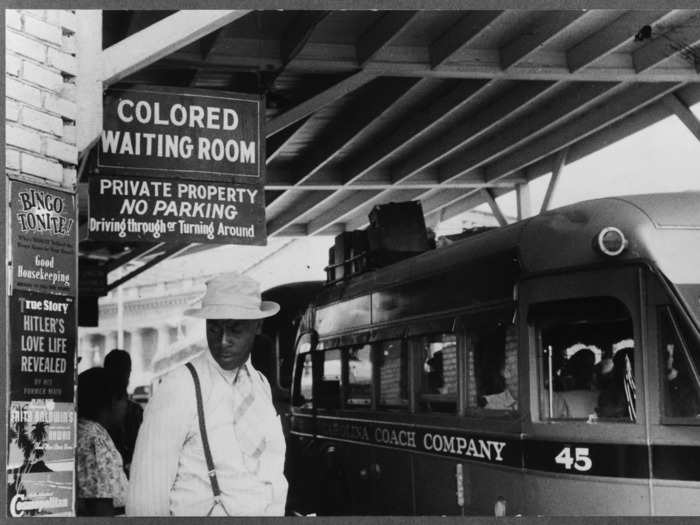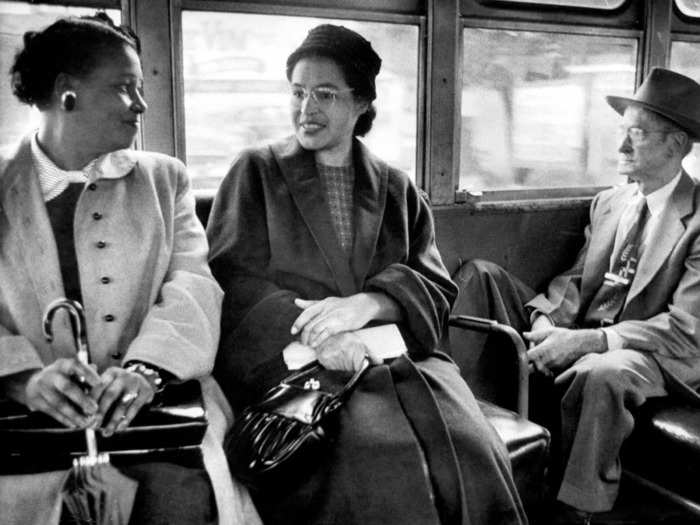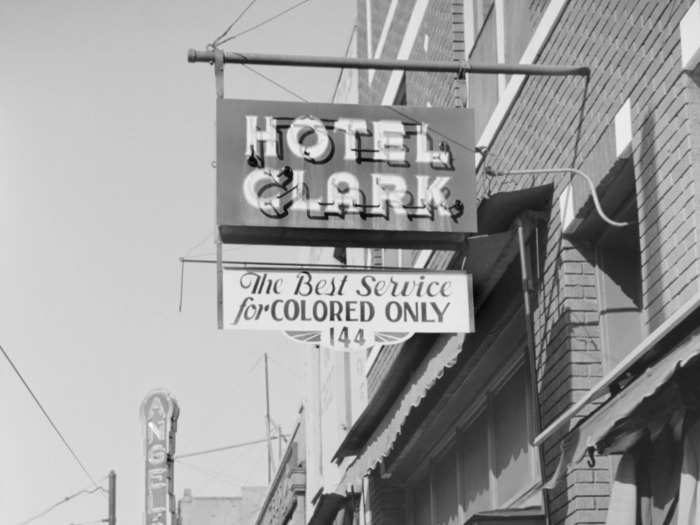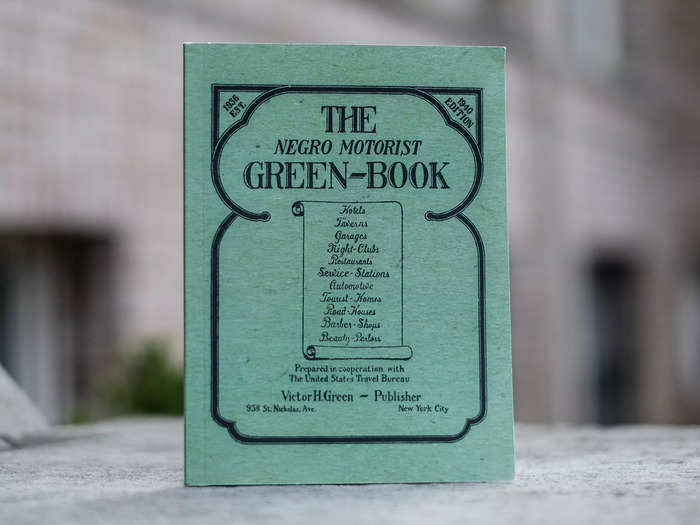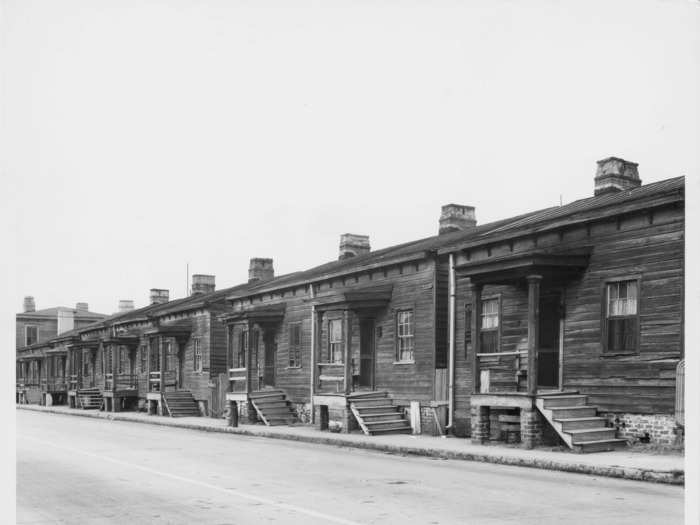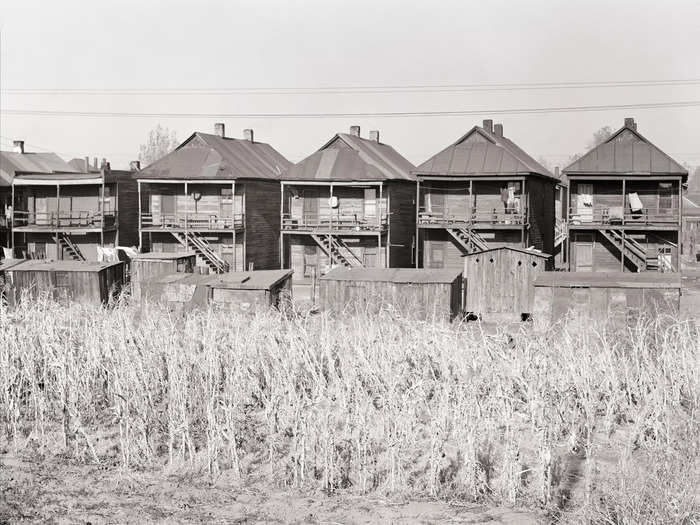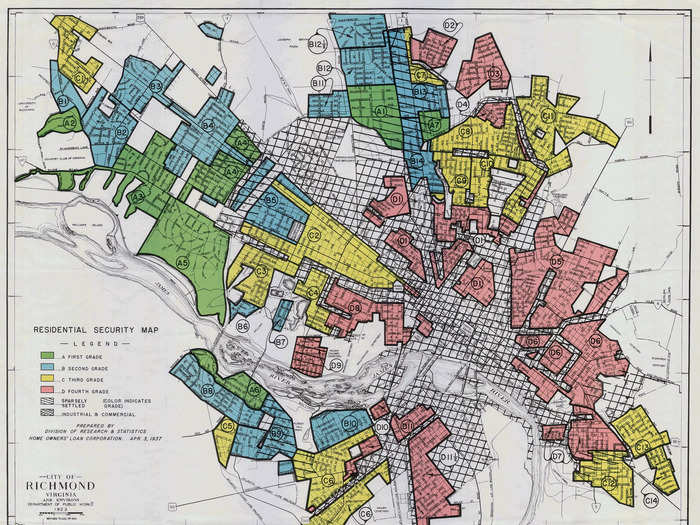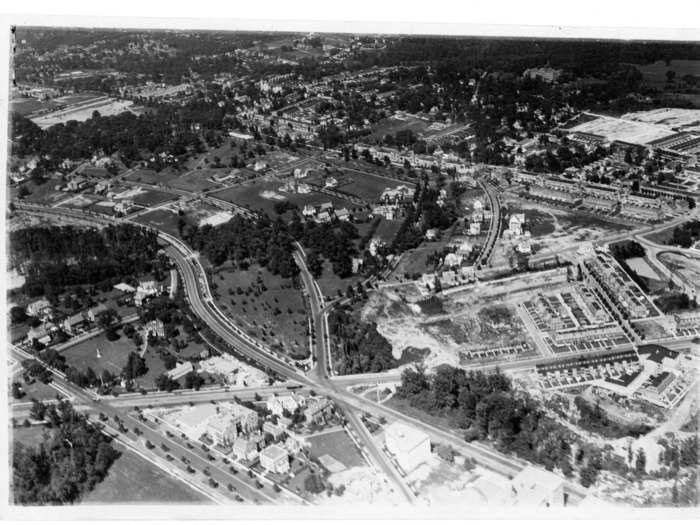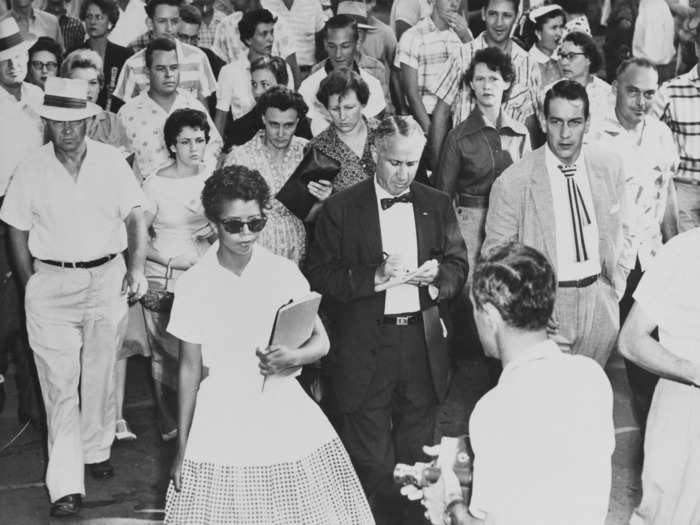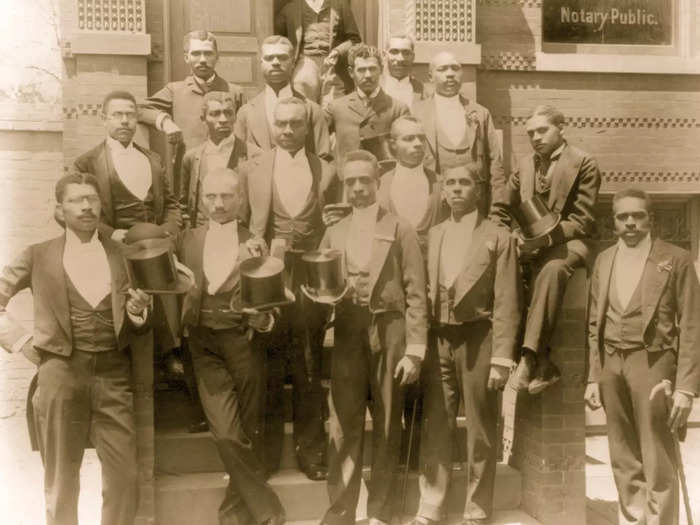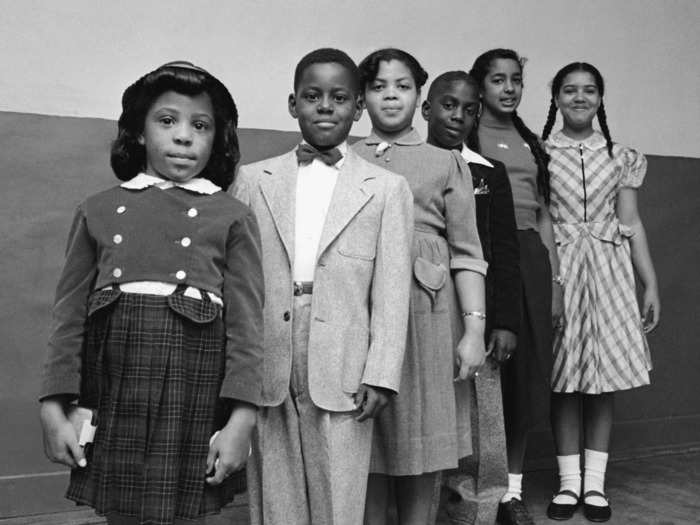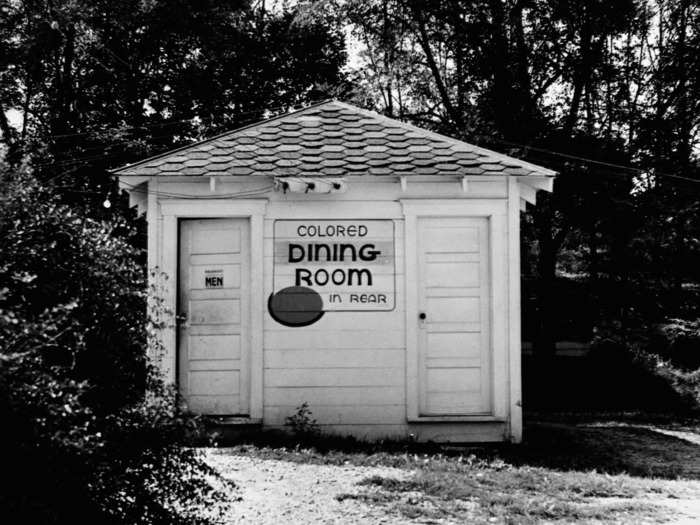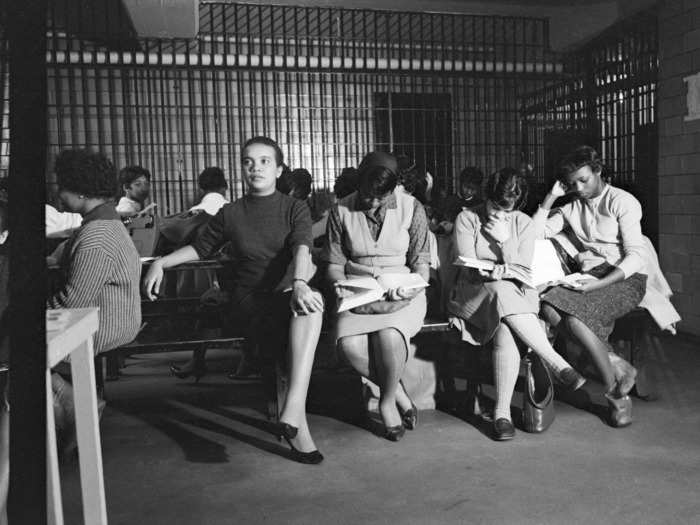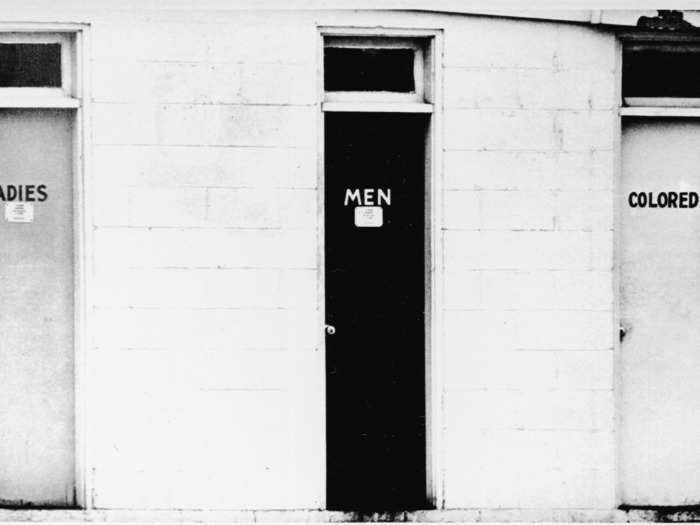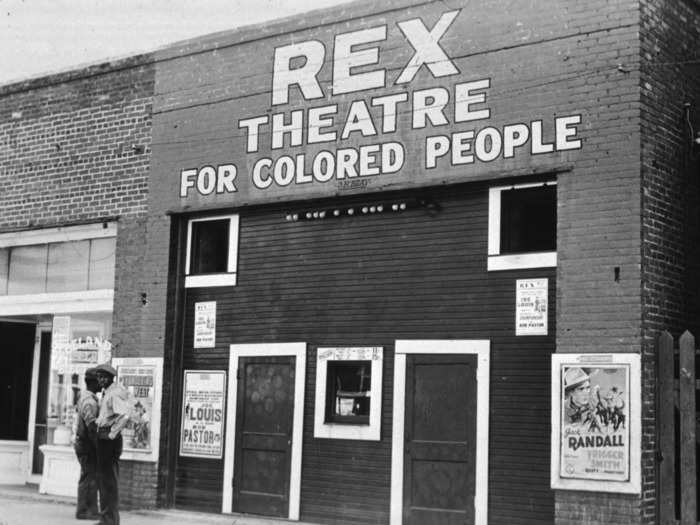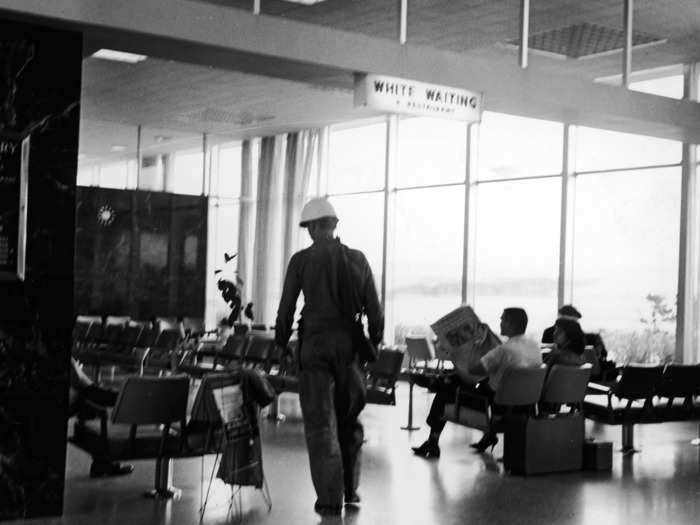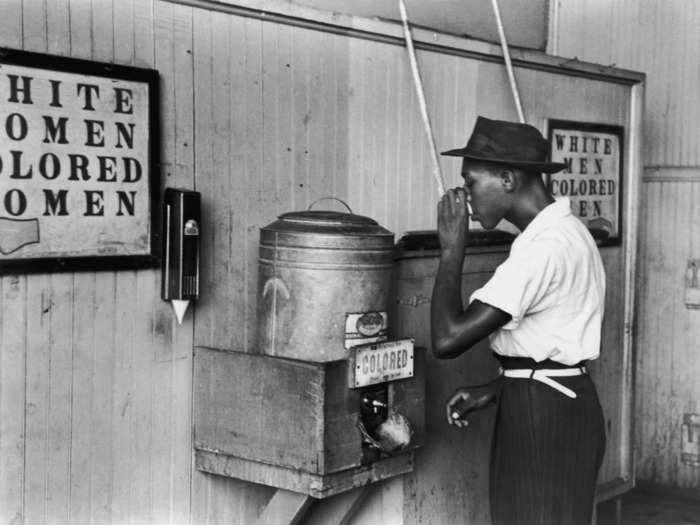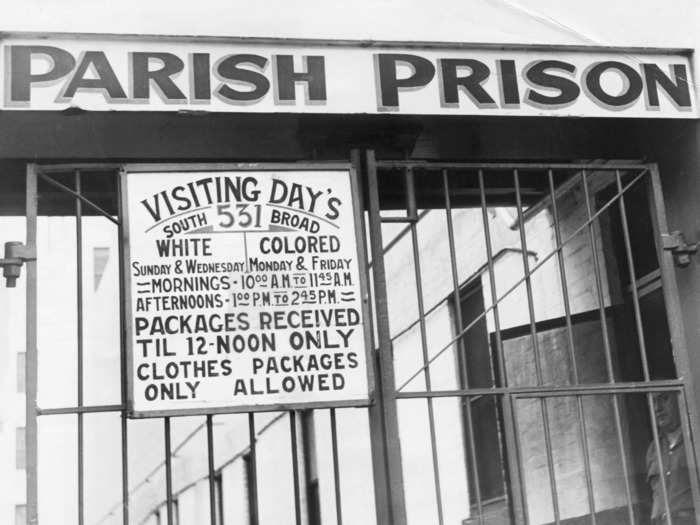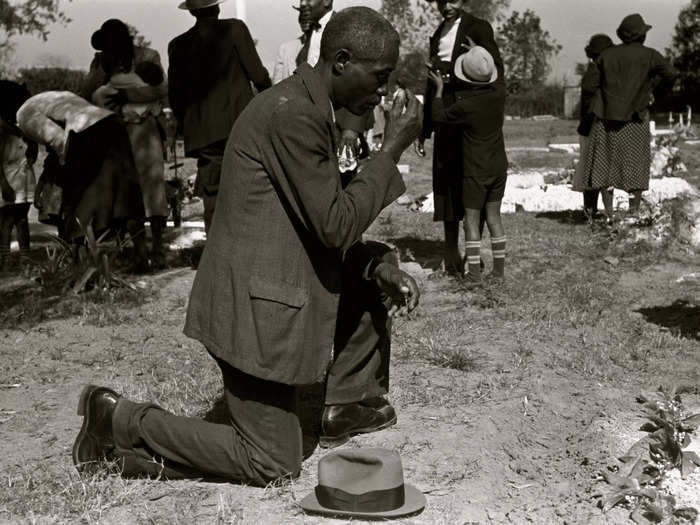African American men wearing tuxedos carry a coffin and a "Here Lies Jim Crow" sign down the middle of a street as a demonstration against "Jim Crow" segregation laws.CORBIS/Corbis via Getty Images
- Throughout the late 19th and early 20th centuries, segregation laws, known as Jim Crow laws, created restrictions for Black Americans.
- While these laws were constantly challenged, it wasn't until 1964 that the discriminatory laws were outruled by Congress.
Throughout the 18th and 19th centuries, segregation laws, also known as Jim Crow laws, were instated throughout most parts of the American South to separate white and Black Americans after the abolishment of slavery. From separate housing and education, to restrictions on transportation and restaurants, and even the prohibition of interracial marriage, segregation laws were proposed under the guise of "separate but equal." Instead, these regulations allowed continued racism and discrimination toward Black Americans and forced restrictions to keep them from being allowed to succeed or thrive.
Prior to Jim Crow, "Black Codes" were introduced throughout the South starting around 1865. These laws dictated where Black people could work and live, as well as ensured their availability for cheap labor. Many Black people were forced to sign annual labor contracts and risked being arrested, fined, and forced into unpaid work if they refused to sign.
Black Americans who challenged any of the unfair laws placed upon them often faced extreme consequences, like jail time, beatings, and lynchings.
Public transportation, including buses and trains, were segregated throughout the Jim Crow era with Black transients either sitting in the rear of the vehicle or completely denied entrance.
View of a passengers under a sign that reads 'Colored Waiting Room' at a bus station in Durham, North Carolina, Jack Delano/PhotoQuest/Getty Image
Even airports practiced segregation, despite airline companies following the practices more loosely.
Source: Conde Nast Traveler
In 1955, Rosa Parks was arrested after refusing to give up her seat on a bus to a white man, catapulting the civil rights movement.
Don Cravens/The LIFE Images Collection/Getty Images
But aside from shared public transportation, driving while Black during Jim Crow remained a dangerous feat.
Discriminatory laws and practices, including Black travelers being denied access to services like gas, food, restrooms, and lodging, as well as unreasonable police stops, made driving solo a hazardous experience.
Hotel Clark with sign "The Best Service for Colored Only" in Memphis, Tennessee, October 1939 Universal History Archive/Universal Images Group via Getty Images
Making stops in unfamiliar cities or "sundown" towns increased the risk of threats and lynchings, Stopping in an unfamiliar place carried the risk of humiliation, threats, or worse.
Source: History.com
To counteract these issues, the Green Book, a Black travel guide was created, recommending safe accommodations, stops, and locations for Black travelers to use while on the road.
A copy of the Green Book is seen outside of a historic black hotel on March 30, 2022 in Washington, D.C. Michael A. McCoy/For The Washington Post via Getty Images
White-dominant residential areas were also prohibited from Black families through various zoning laws across different cities.
The 'shacks of the Blacks', low-cost housing where African Americans typically lived in order to maintain racial segregation prior to the civil rights movement, Savannah, Georgia. American Stock Archive/Archive Photos/Getty Images
It wasn't until 1917 that the Supreme Court decided this form of zoning was unconstitutional because it interfered with owners' property rights.
A settlement where Black steel foundry workers lived in East St. Louis, Illinois. H. Armstrong Roberts/ClassicStock/Getty Images
Later, in the 1920s, Secretary of Commerce Herbert Hoover established a federal zoning committee that proposed laws preventing lower-income families from moving into middle-income neighborhoods. Local boards agreed, and the updated rules directly targeted Black families.
Source: JSTOR Daily
In Richmond, Virginia, people were prohibited from residing on any block where they were not allowed to marry the majority of residents, leading to the state's anti-interracial marriage law.
Color coded illustrated map of Richmond, Virginia in the United States, April 3, 1937. It is annotated to show mortgage lending risk based on neighborhood, including residential, commercial and industrial areas, 1930s. Residential districts are denoted as low, medium and high income areas. These types of maps were later known as redlining maps. National Archives/Interim Archives/Getty Images
Red-lining was introduced in the 1930s, by the Federal Home Loan Bank Board and the Home Owners' Loan Corporation. Maps marked areas in red, which were considered risky and hazardous for mortgages, were created to keep whites from moving into impoverished areas. These neighborhoods were predominantly Black and its residents either had no access or expensive access to mortgage loans.
Source: History.com
Even as segregated housing laws were challenged, other tactics were used to keep Blacks and whites from living among each other.
Aerial view of Roland Park/Guilford, Baltimore, Maryland, 1910. The neighborhood was segregated, and is considered an early example of the enforcement of racial segregation through the use of restricted covenants. JHU Sheridan Libraries/Gado/Getty Images
In 1949, the Housing Act of 1949 was proposed to fix a housing shortage after an influx of soldiers returned from World War II, but the act subsidized housing for white people only. Additionally, Black families were prohibited from purchasing the homes even on resale, directly funding white flight from cities.
Source: History.com
From primary schools to colleges and universities, public educational institutions were segregated until 1954.
15-year-old Elizabeth Eckford is followed by a sullen mob as she attends her first day at Little Rock Central High School in Little Rock, Arkansas. FPG/Archive Photos/Getty Images
Black colleges like Howard University and Fisk University were created to address the fact that there weren't any establishments of higher education that Black Americans were allowed to attend.
Law graduating class at Howard University, Washington, D.C. circa 1900 Buyenlarge/Getty Images
In 1954, segregation of education was considered unconstitutional by the Supreme Court after Brown v. Board of Education.
Portrait of the children involved in the landmark Civil Rights lawsuit 'Brown V. Board of Education,' which challenged the legality of American public school segregation, Topeka, Kansas, 1953. Carl Iwasaki/Getty Images
However, decision-making was granted to local courts, which resulted in some districts defying school integration. The blurred lines resulted in federal troops accompanying nine Black students, known as the Little Rock Nine, in 1957, as they attended a high school in Little Rock, Arkansas after Governor Orval Faubus had called in the National Guard to block them.
However, the complete desegregation of educational institutions did not fully take place until the passing of the Civil Rights Act Of 1964.
Source: History.com
Restaurants, cafes, public parks, dance clubs, and theaters were all places of segregation.
An outhouse at a rest stop between Louisville and Nashville bears a sign directing colored patrons to the dining room behind the outhouse. Corbis via Getty Images
At eateries, Blacks were often prohibited from dining in, usually being directed to the back of a restaurant to order and pick up food, only being served take out. Some restaurants would not service Blacks at all.
Violating these discriminatory laws could have resulted in jail time.
March 15, 1960: College girls arrested in a city-wide wave of restaurant sit-down demonstrations occupy a female detention room at a jail in Atlanta. Many of them are studying college textbooks. A series of segregation protests came almost simultaneously at around ten public eating places. Bettman via Getty
Public restrooms were also segregated.
View of segregated public restrooms labelled 'ladies,' 'men' and 'colored,' USA, circa 1960. Hulton Archive/Getty Images
At movie theaters, Black patrons were forced to sit on the balcony, which usually meant climbing several stairs.
November 1939: The Rex Theatre in Leland, Mississippi, which is segregated under the Jim Crow laws. Bettmann / Contributor / Getty Images
Meanwhile, white patrons were seated on the main floor. Even concerts performed by Black musicians were segregated. Sometimes venues were classified as Black or white, other times, venue seating and standing areas were separated by race. Segregation laws were so strict that Black performers often were not allowed to look at or interact with white fans in the audience.
Source: Rolling Stone
Blacks and whites were prohibited from being in the same waiting room in professional offices.
People sit in the "White Waiting" area inside an office building, Alabama, circa 1960. Express Newspapers/Getty Images
Public phone booths and water fountains were also segregated.
July 1939: An African-American man drinking at a segregated drinking fountain in Oklahoma City, Oklahoma. Russell Lee/Library Of Congress/Getty Images
Cemeteries, asylums, and even jails were segregated.
Entrance to New Orleans Parish Prison, showing segregated visiting periods. Bettmann via Getty
Segregated asylums often meant vastly different treatment. Reports of Black patients being sterilized without consent and forced to undergo inhumane treatments for mental illness revealed these institutions to be motives to eliminate Blacks suffering from mental health issues and increase the white American race.
Source: DailyMail
For cemeteries specifically, Black communities were forced to create their own, with very little funding, usually in potter's fields with terrible infrastructure and wooden paddles for identification.
A man prays over the grave of a relative in a cemetery on All Saints' Day in New Roads, Louisiana, 1938. Buyenlarge/Getty Images
Meanwhile, white people in the same city were often buried in proper cemeteries with manicured lawns and marble tombstones.
Source: AP News

